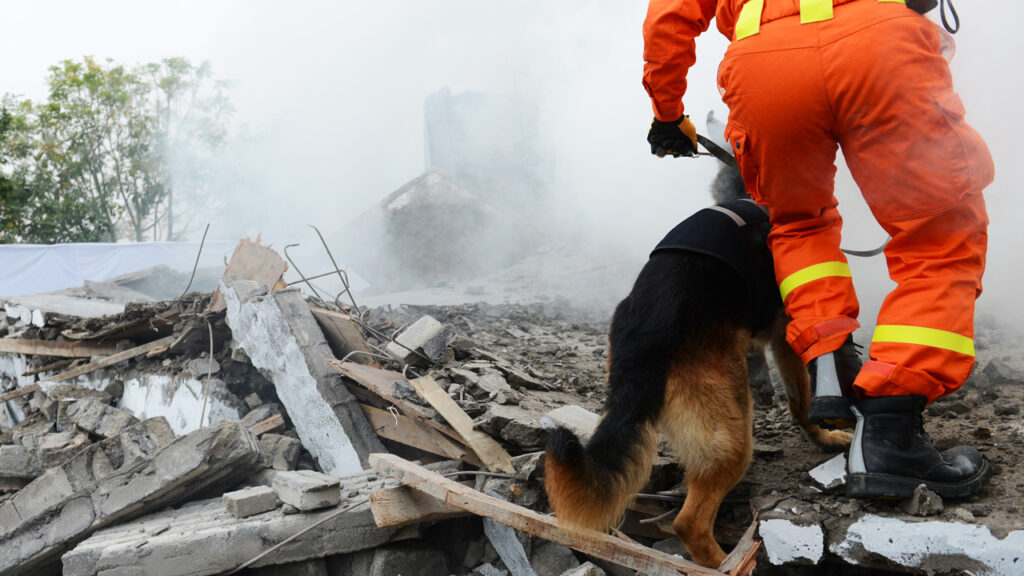
In the ominous shadow of tectonic movements, earthquakes stand as one of the most formidable natural disasters humanity faces.
Their unpredictability and potential for vast destruction make them events that no one can afford to ignore. From the rumbling streets of San Francisco in 1906 to the devastating tremors in Japan in 2011, history has repeatedly illustrated the relentless power of seismic activities. While predicting earthquakes’ exact timing and intensity remains an elusive science, one thing is within our control: preparedness. Many disaster response professionals often say, “It’s not the shaking that’s the real threat; it’s the lack of preparedness.” And in this continuum of readiness, tabletop exercises have emerged as vital tools. By simulating seismic crises in controlled environments, these exercises allow organizations and communities to critically evaluate their preparedness, response, and recovery strategies, ensuring that when the ground violently stirs beneath our feet, we are not caught off guard.
What is a Tabletop Exercise for Disaster Preparedness?
A tabletop exercise is a discussion-based session where team members meet in an informal setting, typically around a table, to discuss their roles during an emergency and make decisions concerning specific simulated scenarios. These scenarios mimic real-life situations, such as earthquakes, allowing participants to understand potential challenges and devise strategies to overcome them.
For earthquake preparedness, a tabletop exercise might simulate the moments after a major quake hits a city. Participants would discuss evacuation plans, communication channels, resource allocation, and immediate response tactics.
One notable platform offering extensive knowledge on this topic is PreparedEx. Their insights emphasize the significance of such exercises in cultivating a culture of readiness.
Is a Tabletop Exercise Considered an Emergency Preparedness Drill?
While both tabletop exercises and emergency preparedness drills aim to prepare organizations for emergencies, there’s a difference in their execution. A tabletop exercise is more of a strategy-focused, discussion-based activity without real-time enactment. It centers on dialogue and decision-making processes.
On the other hand, an emergency preparedness drill involves real-time, physical practice of specific procedures, like evacuating a building. Think of the tabletop exercise as the planning stage and the drill as the execution stage. Both are crucial components of a comprehensive emergency response plan.
Related: A Comprehensive Guide to Running a Tabletop Exercise for Earthquake Preparedness in Your Business
What is the Tabletop Exercise Method?
The tabletop exercise method revolves around a structured interactive discussion. Here’s a basic breakdown:
- Scenario Presentation: Facilitators present a hypothetical but plausible emergency scenario. For our context, this could be an earthquake striking at peak working hours.
- Team Responses: Participants discuss their responses, detailing what actions they would take at each stage of the event.
- Reviense plan and identifies areas for improvement.
- Report Generation: A detailed report capturing the discussions, decisions, and areas of improvement is generated for future reference.
A service like FirstLook by PreparedEx can offer rapid insights into your organization’s crisis readiness, complementing the findings from tabletop exercises.
The 5 Key Disaster Preparedness Activities
- Disaster preparedness doesn’t stop at exercises and drills. A holistic approach involves multiple facets:
- Risk Assessment: Understand the specific threats your community or organization faces and assess vulnerabilities.
- Planning: Develop comprehensive emergency response and recovery plans detailing roles, responsibilities, and procedures.
- Training: Equip team members with the knowledge and skills to effectively respond to emergencies.
- Communication Strategy: Establish clear channels for internal and external communication during crises.
Regular Reviews & Updates: Continually review and update all preparedness measures, ensuring they remain relevant and effective.
What is the Major Incident Tabletop Exercise?
A major incident tabletop exercise focuses on large-scale events impacting communities or organizations. In the context of earthquakes, this would simulate the aftermath of a massive quake, possibly leading to structural damages, communication breakdowns, fires, and more. The goal is to test the organization’s ability to respond to multiple complex challenges that arise simultaneously.
Resource: Principles of Simulation Exercises – Online Training Course
What Makes a Good Tabletop Exercise?
- The effectiveness of a tabletop exercise can vary, but the most successful ones often share these qualities:
- Realism: Scenarios must be plausible, forcing participants to think critically about their responses.
- Clarity: Clear objectives should be set beforehand, ensuring participants understand the exercise’s purpose.
- Diverse Participation: Including members from various departments or community segments can offer a holistic view of potential challenges and solutions.
- Expert Facilitation: An experienced facilitator can guide discussions, challenge participants, and ensure all objectives are met.
- Constructive Feedback: Post-exercise feedback should be actionable, highlighting strengths and improvement areas.
Summary
The age-old adage “Practice makes perfect” rings true, especially in disaster response. While we can’t predict every nuance of an earthquake’s aftermath, we can control our level of preparedness and ensure an efficient, coordinated response. Tabletop exercises are more than just discussions around a table; they are rehearsals for reality. By investing time and resources into these exercises, we identify gaps in our plans and fortify our collective resilience against nature’s tremors. The trembles of the earth will continue, but with robust preparation, we can stand firm, rebuild, and emerge even stronger
Insightful, well written and clarification on the topic.
Surely, findings from the TTX, should be followed by the lesson identified, for plan of improvement.
Thank you for kind consideration Rob Burton ,and regular updates on the topic.
Thank you, Nehat for your kind comments. I trust all is well.